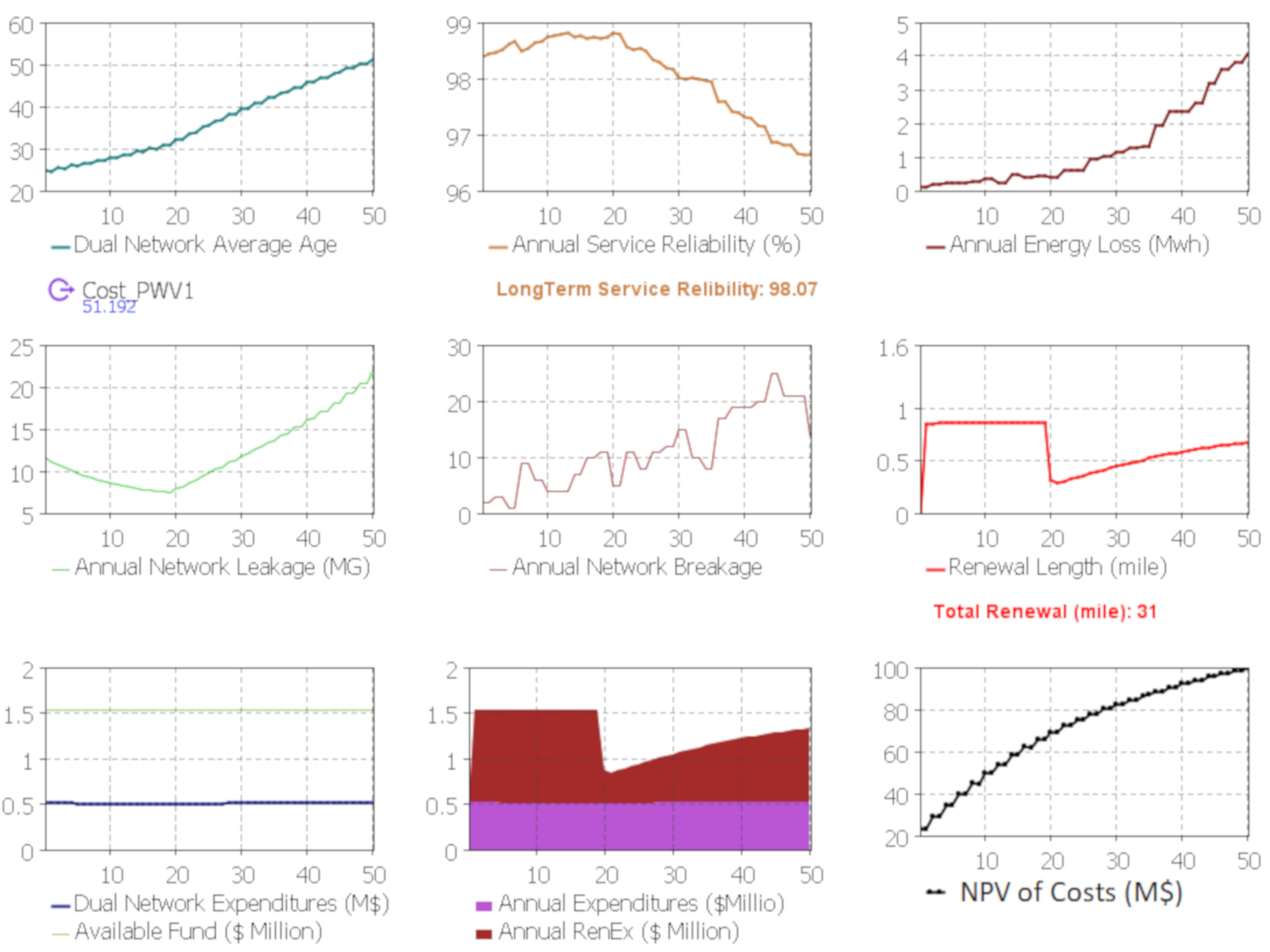Urban Water Distribution Infrastructure System
Authors
- Ali Mostafavi – Texas A&M University
- Sybil Sharvelle – Colorado State University
- Kambiz Rasoulkhani – Texas A&M University
Purpose
In order to evaluate innovative water strategies (e.g., dual water distribution systems) before investments are made, analysis of long-term resilience of urban water infrastructure is needed. The objective of this study is to develop simulation models for resilience-based water infrastructure planning and asset management.
Description
We develop a dynamic mathematical simulation model to capture the long-term dynamics of water distribution infrastructure systems. The simulation model integrates the utility agency’s renewal decision-making processes with the physical pipeline degradation to simulate the long-term transformation of water distribution infrastructures. A set of modeling parameters and variables that vary for dual (innovative) and singular (conventional) water distribution infrastructures based on their system attributes, such as pipes age, length, material, and diameter, energy intensity, water demand, water price, average pressure and flow rate, as well as capital, operational and maintenance expenditures, are considered in the simulation model. Accordingly, various system performance measures, including network condition, break frequency, leakage, energy loss, service reliability, as well as network life-cycle costs are simulated over a 50-year horizon under various scenarios of renewal strategies and demand fluctuations. Simulation outputs are available for three neighborhoods in the city of Fort Collins, CO., enabling analysis of long-term performance across dual and singular water distribution infrastructure systems. In addition, the simulation model enables comparison of the network performance sensitivity to demand fluctuations between dual and singular systems.
Rasoulkhani, K., Mostafavi, A. (2018). Resilience as an emergent property of human-infrastructure dynamics: A multi-agent simulation model for characterizing regime shifts and tipping point behaviors in infrastructure systems, PLOS ONE.
Rasoulkhani, K., Reyes M. P., Mostafavi, A. (2017). Emergence of resilience from infrastructure dynamics: a simulation framework for theory building, ASCE International Workshop on Computing in Civil Engineering (IWCCE), Seattle, USA.
Attributes
• Long-term transformation of urban water distribution infrastructure under different stressors (e.g., population growth/shrinkage, aging infrastructure)
• 50-year performance measures of water distribution networks including network condition, breakage, leakage, energy loss, service reliability, and life-cycle costs



